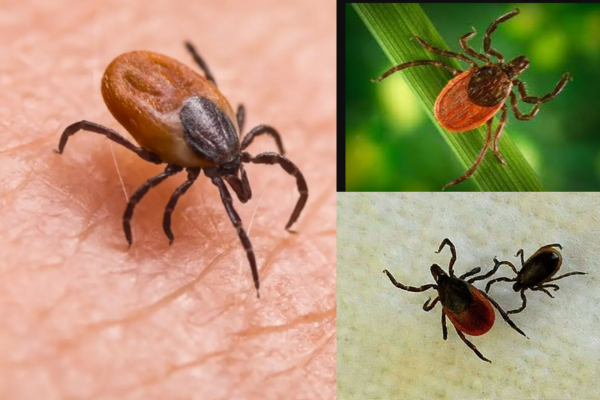Vaccine Manufacturers Are Getting Ready for Bird Flu

Although most experts believe that bird flu poses no immediate threat to humans, efforts are being made to develop vaccines for H5N1 or another potential pandemic virus.
Minks in Spain, seals in Scotland, and sea lions and dolphins in South America have all been found to be infected with H5N1, a highly pathogenic strain of avian influenza. Avian flu is not a new phenomenon; epidemiologists have been researching it for decades. However, the discovery of the virus in mammals has many people worried that it will spread to humans and cause a larger outbreak.
As the world enters the fourth year of a global pandemic caused by a virus that most likely originated in an animal, there is legitimate concern that another virus will uproot our lives. H5N1 has previously infected humans, though human-to-human transmission has been rare. While the World Health Organization (WHO) reports that avian flu has a mortality rate of around 56% in humans, many experts believe it will be much lower if the virus becomes more transmissible. One of the reasons avian flu is so deadly is that it infects the lower respiratory tract, causing respiratory failure. It would most likely cause milder illness if it mutated to infect the upper respiratory tract and spread more easily. Even a virus that causes mild or moderate illness in a large number of people can have serious consequences, as the COVID pandemic demonstrated. As a result, efforts are being made to develop vaccines to protect against this type of bird flu.
Bird flu has previously infected humans; in fact, just last week, a Cambodian girl died from H5N1 (although not the same strain as the one that is sickening birds worldwide).
“Every time we see this happen, we get these spurts of cases, and people say, ‘Here it comes; it’s going to happen,'” says Michael Osterholm, director of the Center for Infectious Disease Research and Policy at the University of Minnesota. However, he emphasised that H5N1 is unlikely to pose an immediate threat to humans.
Others concur. “I’m keeping a close eye on it as an expert, but as a member of the community, as a parent, and as someone who [has] recently experienced the COVID-19 pandemic, I’m not concerned right now,” says Caitlin Rivers, an epidemiologist at the Johns Hopkins Center for Health Security. “Right now, this is an animal health issue with the potential to become a human health issue.”
Avian influenza viruses infect birds by attaching themselves to a receptor in their respiratory tracts. To become a human virus and begin circulating from person to person in the population, the virus must be able to attach itself to the human version of this receptor, which it has not yet evolved to do.
“It’s a really dangerous time to be a bird,” says Andrew Pavia, chief of paediatric infectious diseases at the University of Utah. “But as of today, the risk to humans remains very low. Our concern is what will happen as it spreads more and more.”
Unfortunately, it is nearly impossible to predict when this jump will occur. “No one knows when the next influenza pandemic will occur. “It could be tomorrow [or] years from now, and we have no idea which of the viruses will become the next pandemic virus,” Osterholm says. “At the outset, you must state that there is uncertainty, with one exception: a pandemic will occur.”
The United States is somewhat prepared to deal with avian flu: there is a supply of egg-based flu vaccines for the H5N1 strain. One of the most common ways to make a flu vaccine is with eggs. Manufacturers create it by injecting an inactivated or weakened virus into a fertilised chicken egg, incubating the egg for a few days while the virus multiplies, and then harvesting the virus for use in the vaccine. The government maintains a secret chicken stockpile in undisclosed locations across the United States in case we need to make egg-based vaccines quickly, such as during a flu pandemic. This vaccine strategy may be concerning because it is based on an animal that is highly susceptible to the flu in question. However, several experts told Scientific American that high levels of biosecurity are in place at the chicken facilities to prevent bird flu contamination.
There are alternatives to egg-based vaccines. Since the early 2010s, the United States Department of Health and Human Services has collaborated with CSL Seqirus, one of the world’s largest influenza vaccine manufacturers, to develop vaccines grown in laboratory cells. The Food and Drug Administration has approved the pandemic preparedness vaccine AUDENZ, which specifically targets the H5N1 subtype. Although it is impossible to predict which virus will cause the next pandemic, CSL Seqirus has a virus library with the potential to infect humans. Furthermore, the company is always on the lookout for candidate vaccine viruses that it can tailor to a specific pathogen.
“We create a mock-up file using data from one of the avian strains,” says Marc Lacey, who leads CSL Seqirus’ pandemic preparedness and response team. The members of the team basically identify specific viruses, use them to create vaccines, and conduct some of the early safety studies so that if an avian flu strain evolves into a true pandemic strain transmitting between humans, they will be prepared with an adequate vaccine. Lacey claims that his company could supply the US government with 150 million doses within the first six months of a pandemic being declared, but he believes the scale-up potential could be greater, especially if multiple manufacturers collaborated to produce it. Because the world has eight billion people, scaling up and widespread collaboration across countries would be required to produce enough vaccine.
There are also efforts to apply messenger RNA (mRNA) technology to flu vaccines, similar to that used for some COVID vaccines. According to Deborah Fuller, a microbiologist at the University of Washington, these efforts range from developing a universal flu vaccine to developing a “multivalent” vaccine that targets only a few subtypes—or versions of the virus (like a typical seasonal flu vaccine does). One benefit of mRNA technology is its rapid production. Furthermore, as a result of the COVID pandemic, there is now more infrastructure to mass-produce doses. “RNA vaccines can be designed extremely quickly—you only need the genetic sequence of the new variant that’s emerging, and you can have a vaccine tested in animal models within weeks,” Fuller says.
Scott Hensley, a microbiology professor at the University of Pennsylvania, is also researching mRNA flu vaccines. He is a member of a research team working on a 20-subtype mRNA flu vaccine that includes an H5N1 strain (although not the one currently circulating in birds). The team’s findings were recently published in Science. Hensley’s lab is currently working on a single-strain vaccine tailored to the current bird flu strain, which is being tested in laboratory animals. He emphasises that his vaccines, like the COVID vaccines, are intended to prevent serious illness and death rather than infection.
However, even the 20-subtype vaccine should provide some protection against the new strain. “The goal when developing [that] vaccine was to create one that could induce a certain level of immune memory against every subtype,” Hensley says. “Our goal was not to predict which influenza subtype or strain would cause the next pandemic. Rather, the vaccine [would induce] some level of immune memory against each subtype, limiting disease and death caused by new pandemic strains.”
A vaccine is only one component of pandemic preparedness; effective treatments are also required. According to Pavia, researchers aren’t starting from scratch to develop something like the COVID antiviral Paxlovid, which took nearly two years to reach the market. Antivirals approved by the FDA for influenza, such as Tamiflu, are already available and will be critical in reducing deaths during a flu pandemic. Pavia is also optimistic that the United States will be able to quickly adapt diagnostic tests to match an outbreak strain of pandemic flu.
“We have better tools and knowledge about influenza than we did about coronaviruses. “We’d be a step ahead in many ways,” Pavia says. “But what concerns me is our political capacity to respond. We must continue to raise awareness and prepare for the worst. And if things start to pick up speed, we’ll need a coordinated, nonpolitical effort to move quickly and effectively.”








